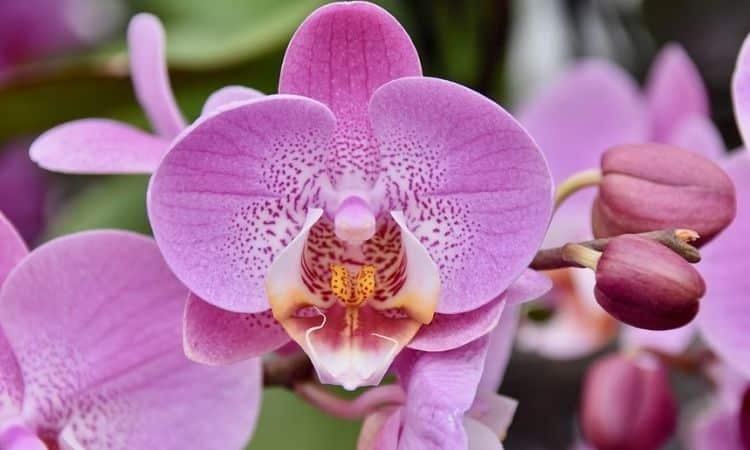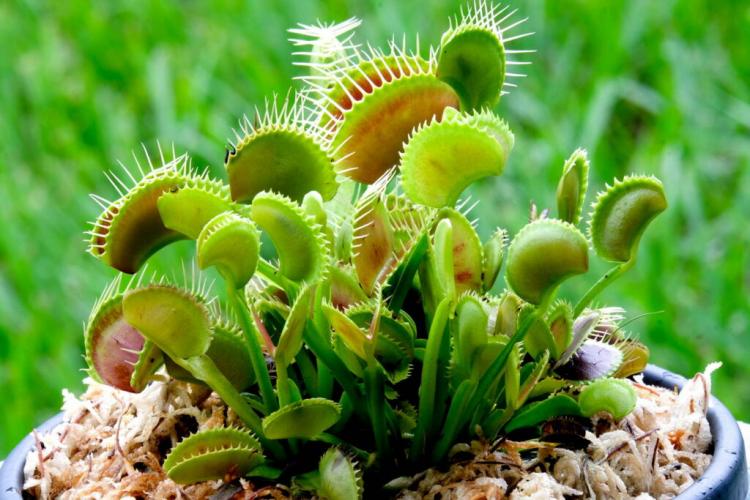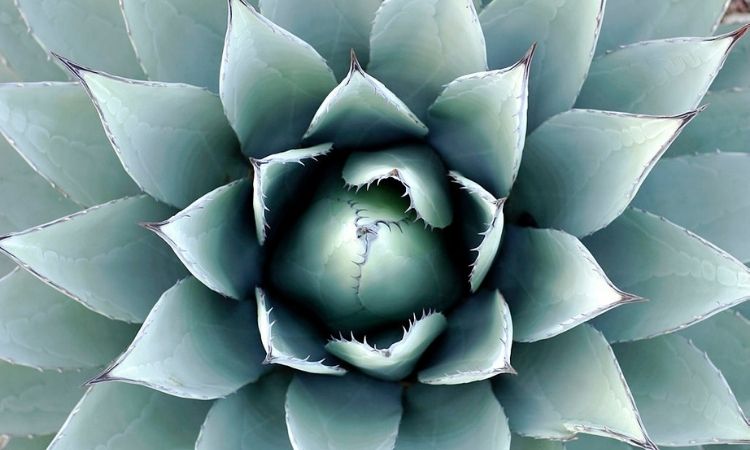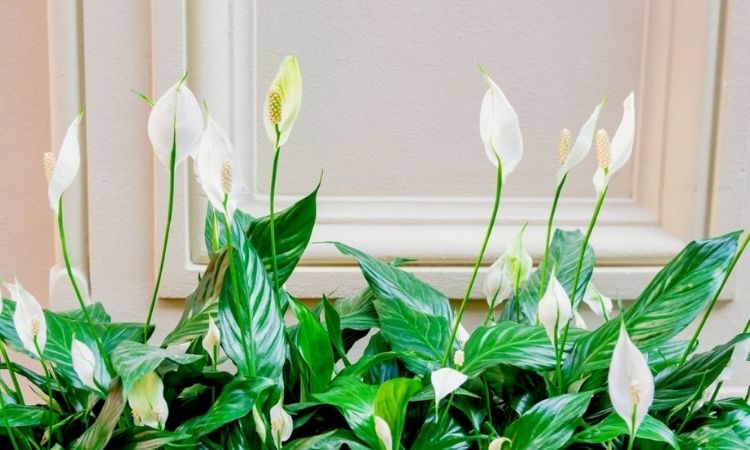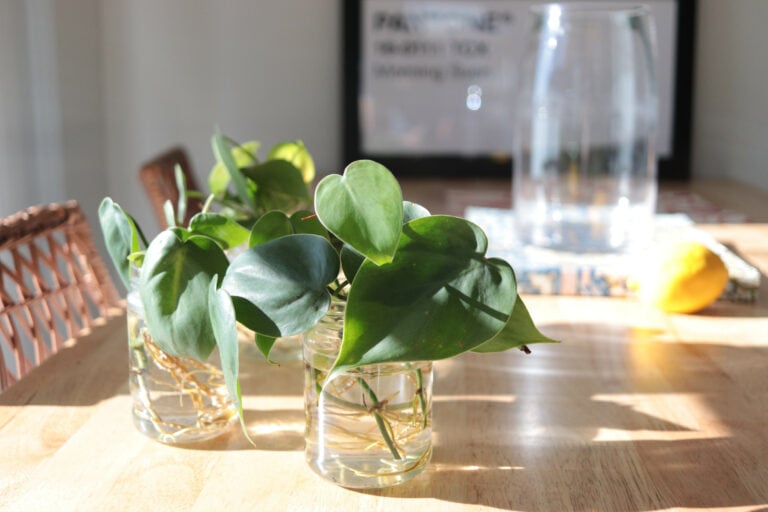Orchids: Tips On Purchase, Location, Care & Cuttings
Orchids are known for their colorful and magnificent flowers. We will tell you everything you need to know to make perfect and healthy orchids decorate your home. The popular plants with characteristic flowers can be found in almost every household.
Especially in the USA orchids are very common as a decorative exotic on the windowsill and enjoy increasing popularity. The subject of orchids is a world of its own, especially when you look at the immeasurable variety of species and variations. Even the professional handling of this extraordinary plant is an art in itself and requires special knowledge. We will tell you everything you need to know about the orchid and how to best handle it so that you can be happy and healthy with its flowers.
Orchid Family: Characteristics And Diversity
Table of Contents
Orchids form taxonomically (systematically) their own family (Orchidaceae) and, contrary to common belief, is not only found in the tropics but are distributed worldwide. However, the majority of cultivated orchids originate from warmer climates and therefore cannot tolerate cold temperatures. The orchid family is the second-largest plant family among flowering plants.
It is estimated that there are 15,000 to 30,000 species worldwide. Probably the most striking feature of the multi-faceted flowers is the zygomorphic flower (asymmetrical upper and lower lip) and a large number of species that grow as so-called epiphytes on other plants.

The Best Known And Most Popular Orchid Species
There are also a large number of orchid species on the market, which differ greatly in their appearance and care. We present the most popular species here:
Cattleya
- Hybrid Breeding.
- Large and fragrant flowers.
- Many color variations.
- Epiphytic orchid with high care requirements.
- Cymbidium.
Boat orchid
- Popular species from China.
- Large plants, but also smaller varieties.
- In summer also possible on the terrace.
- High light requirement and low maintenance.
- Dendrobium.
Grape Orchid
- Species with very many varieties.
- Some varieties with many flowers per plant.
- Partly easy-care varieties (Dendrobium nobile), partly demanding (Dendrobium bigibbum).

Miltonia
- Violet Orchid.
- High need for care.
- Sensitive to temperature fluctuations.
Phalaenopsis
- Butterfly orchid.
- Belongs to the most popular species.
- Many variations and colors.
- Relatively easy to clean; room temperature ideal.
Phragmipedium
- “Women’s shoe”.
- Unusual flowers.
- Orange-red or yellowish-green flowers.
Vanda
- Species with high color diversity.
- Also blue to purple flowers.
- High need for light.

Buy Orchids: What You Have To Pay Attention To
If you have decided to buy an orchid in a garden center, there are some points you should pay attention to. The right choice is crucial for the life of the exotic, so you should take a closer look at the following aspects:
- Condition of the flowers: Ideally you should choose a specimen with few open flowers and mostly closed buds.
- Especially when buying in winter, make sure you choose plants from inside the garden center and avoid specimens displayed in front of the door or in a draught. Most species of orchids are very sensitive to cold, so make sure you pack the orchid well for transport.
- Always check the root area of the plant. If you notice black roots, you should keep your hands off the orchid. Ideally, healthy specimens have white roots with greenish tips.
- If you notice other irregularities on the plant, such as pests, you should avoid these specimens at all costs.

Orchids: Ideal Location
Care should be taken when choosing a location for orchids – the majority of exotics have high standards and are not suitable in all places in the house. Orchids usually feel very comfortable on the windowsill. Some species like Cattleya and Dendrobium with a high light requirement are suitable for a west or south window, Phalaenopsis on the other hand feels more comfortable with a north or east orientation.
Direct sunlight is unfavorable for many orchid species, as the leaves burn quickly. It is best to provide indirect light through a curtain in front of the window. The orchids in the shops are originally from the tropics, so for most species, a room temperature between 18 and 25°C in summer is optimal. In winter the thermometer should not drop below 15°C.
Some species like Cymbidium are also suitable for a place in the garden or on the terrace in summer. In this case, make sure that the plant stands protected and does not stand outside at night in cold temperatures.
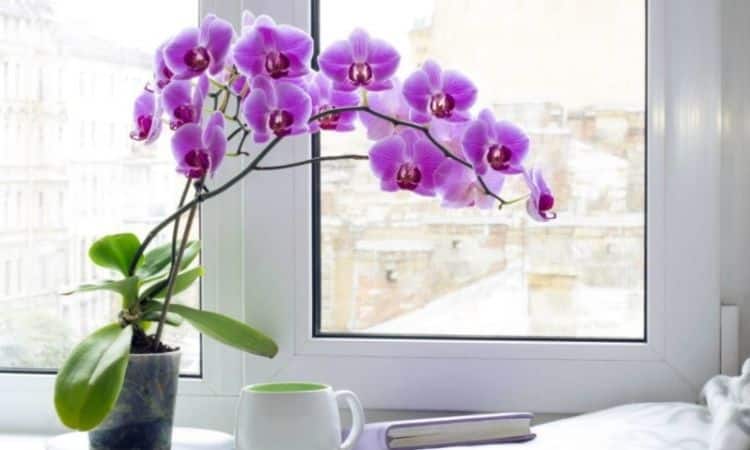
When choosing a location you should consider the following points:
- Optimum space on the window sill
- West or east orientation
- The temperature in summer 18 – 25°C, in winter not below 15°C
- In summer in a protected place in the garden (only certain varieties)
Proper Care Of Orchids
Although orchids are among the most popular house plants in Germany, some of the many species are very maintenance-intensive and not easy to handle. We show you how to care for orchids properly so that they stay healthy and continue to bloom magnificently.
Watering Or Dipping Orchids?
The wrong technique for watering orchids is the most likely reason if it should die at some point. Special care is therefore required here. Orchids generally require very little water. Ideally, you should spray the plant with a spray bottle from time to time. Only use water with a low lime content, such as rainwater, for watering. An optimal way to ensure a sufficient but not excessive water supply is to immerse the roots in a short water bath.
Remove the orchid from its pot and place the roots in the water for a few minutes. Then you should let the roots drain off and put the plant back into the pot. Normally, such an immersion once a week is sufficient. You can find more tips on how to provide your orchid with the ideal amount of water here.

Fertilize Orchids: The Right Orchid Fertilizer
The selection of orchid fertilizers on the market is huge. However, the first question that arises is whether fertilization is necessary at all. And if so: Which fertilizer should be used? Basically, it can be said that orchids do not have a very high nutrient requirement overall, but regular fertilization with special orchid fertilizer is definitely sensible for the supply of the plant. It has proven to be a good idea to add liquid fertilizer to the water once a week to immerse the roots.
You can choose between organic and mineral fertilizer, as well as a mixture of both. From an ecological point of view, the use of organic orchid fertilizer is recommended, as the ingredients are altogether more resource-saving than mineral fertilizers. Nevertheless, the majority of fertilizers on the market are based on mineral components, as they are easier to dose. Basically, the following applies: Follow the manufacturer’s instructions when mixing fertilizers. In case of doubt, however, you should fertilize less rather than more to avoid overdosing and burning the roots.
Repotting Orchids And The Right Orchid Soil
For healthy growth, repotting orchids is a suitable method to give the roots sufficient space again. About one year after purchase, it is time to plant the orchid in a new pot. Proceed as follows:
- Remove the orchid from the old pot and completely detach the substrate from the roots.
- Check the roots for diseased or damaged areas and separate the affected roots.
- Then place the plant in a larger pot in which the roots are still compact but not squashed. Orchids have so-called aerial roots, which should never be too tight. A transparent pot is therefore always a good choice for orchids.
- Finally, fill fresh substrate into the pot from above so that the coarse pieces can be distributed between the roots. As a substrate, you should always use orchid soil, which in most cases is very coarse and contains many pieces of bark. In case of doubt, a coarser product is the better choice, as sufficient air is guaranteed for the roots.

Cutting orchids
For the optimal care of orchids, cutting is quite useful under certain circumstances. We show why and how to cut orchids correctly.
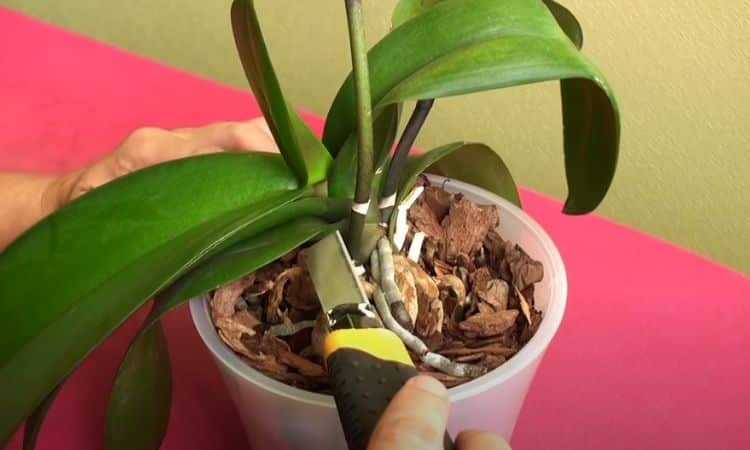
Orchids after flowering: cutting flower stems?
Normally, orchid cutting should be approached rather carefully and less than too much should be removed. When the orchids have faded, it is advisable to cut at the second to the third eye from below, where a new shoot with flower will then grow again. Do not make this cut until the shoot has dried out. This is especially useful for the species Phalaenopsis, as it can flower very often.

Cut Wilted Orchid Leaves
With wilted leaves, the temptation is often great to cut them off without further ado. This should always be avoided. Yellow leaves can at most be removed by hand, just before they come off anyway. The orchid does not tolerate damage to intact plant parts very well, so you should always be careful when cutting. We also have an expert article on the subject of cutting orchids here for you.

Propagating Orchids Via Cuttings
If you would like to have more orchids in your home, you can also grow cuttings from an existing plant in addition to buying a whole plant. In technical jargon, the small shoots on the side of the main plant are called Kindel, as in the case of the orchid. These are offshoots that are supplied by the mother plant and serve for vegetative reproduction.
If you decide to separate a Kindel from the plant, you should always make sure that it is at least a certain minimum size. Basically, the small plant should have at least two leaves and two to tree roots. After separation, the plant should not be placed in normal orchid soil, but special young plant soil for orchids should be used.
